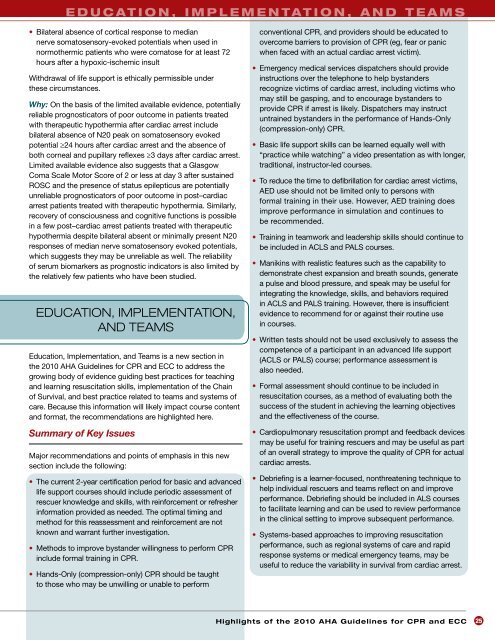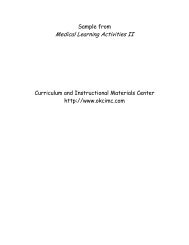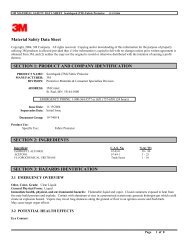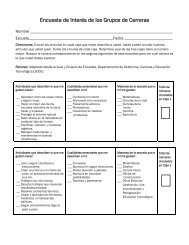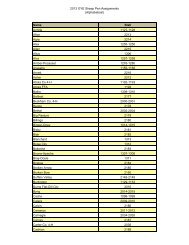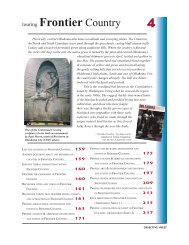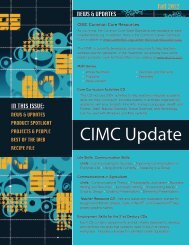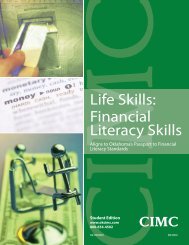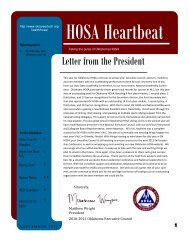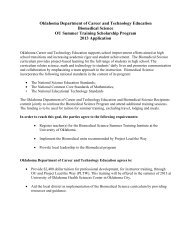Highlights of the 2010 Guidelines for CPR and ECC - ECC Guidelines
Highlights of the 2010 Guidelines for CPR and ECC - ECC Guidelines
Highlights of the 2010 Guidelines for CPR and ECC - ECC Guidelines
Create successful ePaper yourself
Turn your PDF publications into a flip-book with our unique Google optimized e-Paper software.
e d u c a t i o n , i m p l e m e n t a t i o n , a n d t e a m s<br />
• Bilateral absence <strong>of</strong> cortical response to median<br />
nerve somatosensory-evoked potentials when used in<br />
normo<strong>the</strong>rmic patients who were comatose <strong>for</strong> at least 72<br />
hours after a hypoxic-ischemic insult<br />
Withdrawal <strong>of</strong> life support is ethically permissible under<br />
<strong>the</strong>se circumstances.<br />
Why: On <strong>the</strong> basis <strong>of</strong> <strong>the</strong> limited available evidence, potentially<br />
reliable prognosticators <strong>of</strong> poor outcome in patients treated<br />
with <strong>the</strong>rapeutic hypo<strong>the</strong>rmia after cardiac arrest include<br />
bilateral absence <strong>of</strong> N20 peak on somatosensory evoked<br />
potential ≥24 hours after cardiac arrest <strong>and</strong> <strong>the</strong> absence <strong>of</strong><br />
both corneal <strong>and</strong> pupillary reflexes ≥3 days after cardiac arrest.<br />
Limited available evidence also suggests that a Glasgow<br />
Coma Scale Motor Score <strong>of</strong> 2 or less at day 3 after sustained<br />
ROSC <strong>and</strong> <strong>the</strong> presence <strong>of</strong> status epilepticus are potentially<br />
unreliable prognosticators <strong>of</strong> poor outcome in post–cardiac<br />
arrest patients treated with <strong>the</strong>rapeutic hypo<strong>the</strong>rmia. Similarly,<br />
recovery <strong>of</strong> consciousness <strong>and</strong> cognitive functions is possible<br />
in a few post–cardiac arrest patients treated with <strong>the</strong>rapeutic<br />
hypo<strong>the</strong>rmia despite bilateral absent or minimally present N20<br />
responses <strong>of</strong> median nerve somatosensory evoked potentials,<br />
which suggests <strong>the</strong>y may be unreliable as well. The reliability<br />
<strong>of</strong> serum biomarkers as prognostic indicators is also limited by<br />
<strong>the</strong> relatively few patients who have been studied.<br />
EDUCATION, IMPLEMENTATION,<br />
AND TEAMS<br />
Education, Implementation, <strong>and</strong> Teams is a new section in<br />
<strong>the</strong> <strong>2010</strong> AHA <strong>Guidelines</strong> <strong>for</strong> <strong>CPR</strong> <strong>and</strong> <strong>ECC</strong> to address <strong>the</strong><br />
growing body <strong>of</strong> evidence guiding best practices <strong>for</strong> teaching<br />
<strong>and</strong> learning resuscitation skills, implementation <strong>of</strong> <strong>the</strong> Chain<br />
<strong>of</strong> Survival, <strong>and</strong> best practice related to teams <strong>and</strong> systems <strong>of</strong><br />
care. Because this in<strong>for</strong>mation will likely impact course content<br />
<strong>and</strong> <strong>for</strong>mat, <strong>the</strong> recommendations are highlighted here.<br />
Summary <strong>of</strong> Key Issues<br />
Major recommendations <strong>and</strong> points <strong>of</strong> emphasis in this new<br />
section include <strong>the</strong> following:<br />
• The current 2-year certification period <strong>for</strong> basic <strong>and</strong> advanced<br />
life support courses should include periodic assessment <strong>of</strong><br />
rescuer knowledge <strong>and</strong> skills, with rein<strong>for</strong>cement or refresher<br />
in<strong>for</strong>mation provided as needed. The optimal timing <strong>and</strong><br />
method <strong>for</strong> this reassessment <strong>and</strong> rein<strong>for</strong>cement are not<br />
known <strong>and</strong> warrant fur<strong>the</strong>r investigation.<br />
• Methods to improve byst<strong>and</strong>er willingness to per<strong>for</strong>m <strong>CPR</strong><br />
include <strong>for</strong>mal training in <strong>CPR</strong>.<br />
• H<strong>and</strong>s-Only (compression-only) <strong>CPR</strong> should be taught<br />
to those who may be unwilling or unable to per<strong>for</strong>m<br />
conventional <strong>CPR</strong>, <strong>and</strong> providers should be educated to<br />
overcome barriers to provision <strong>of</strong> <strong>CPR</strong> (eg, fear or panic<br />
when faced with an actual cardiac arrest victim).<br />
• Emergency medical services dispatchers should provide<br />
instructions over <strong>the</strong> telephone to help byst<strong>and</strong>ers<br />
recognize victims <strong>of</strong> cardiac arrest, including victims who<br />
may still be gasping, <strong>and</strong> to encourage byst<strong>and</strong>ers to<br />
provide <strong>CPR</strong> if arrest is likely. Dispatchers may instruct<br />
untrained byst<strong>and</strong>ers in <strong>the</strong> per<strong>for</strong>mance <strong>of</strong> H<strong>and</strong>s-Only<br />
(compression-only) <strong>CPR</strong>.<br />
• Basic life support skills can be learned equally well with<br />
“practice while watching” a video presentation as with longer,<br />
traditional, instructor-led courses.<br />
• To reduce <strong>the</strong> time to defibrillation <strong>for</strong> cardiac arrest victims,<br />
AED use should not be limited only to persons with<br />
<strong>for</strong>mal training in <strong>the</strong>ir use. However, AED training does<br />
improve per<strong>for</strong>mance in simulation <strong>and</strong> continues to<br />
be recommended.<br />
• Training in teamwork <strong>and</strong> leadership skills should continue to<br />
be included in ACLS <strong>and</strong> PALS courses.<br />
• Manikins with realistic features such as <strong>the</strong> capability to<br />
demonstrate chest expansion <strong>and</strong> breath sounds, generate<br />
a pulse <strong>and</strong> blood pressure, <strong>and</strong> speak may be useful <strong>for</strong><br />
integrating <strong>the</strong> knowledge, skills, <strong>and</strong> behaviors required<br />
in ACLS <strong>and</strong> PALS training. However, <strong>the</strong>re is insufficient<br />
evidence to recommend <strong>for</strong> or against <strong>the</strong>ir routine use<br />
in courses.<br />
• Written tests should not be used exclusively to assess <strong>the</strong><br />
competence <strong>of</strong> a participant in an advanced life support<br />
(ACLS or PALS) course; per<strong>for</strong>mance assessment is<br />
also needed.<br />
• Formal assessment should continue to be included in<br />
resuscitation courses, as a method <strong>of</strong> evaluating both <strong>the</strong><br />
success <strong>of</strong> <strong>the</strong> student in achieving <strong>the</strong> learning objectives<br />
<strong>and</strong> <strong>the</strong> effectiveness <strong>of</strong> <strong>the</strong> course.<br />
• Cardiopulmonary resuscitation prompt <strong>and</strong> feedback devices<br />
may be useful <strong>for</strong> training rescuers <strong>and</strong> may be useful as part<br />
<strong>of</strong> an overall strategy to improve <strong>the</strong> quality <strong>of</strong> <strong>CPR</strong> <strong>for</strong> actual<br />
cardiac arrests.<br />
• Debriefing is a learner-focused, nonthreatening technique to<br />
help individual rescuers <strong>and</strong> teams reflect on <strong>and</strong> improve<br />
per<strong>for</strong>mance. Debriefing should be included in ALS courses<br />
to facilitate learning <strong>and</strong> can be used to review per<strong>for</strong>mance<br />
in <strong>the</strong> clinical setting to improve subsequent per<strong>for</strong>mance.<br />
• Systems-based approaches to improving resuscitation<br />
per<strong>for</strong>mance, such as regional systems <strong>of</strong> care <strong>and</strong> rapid<br />
response systems or medical emergency teams, may be<br />
useful to reduce <strong>the</strong> variability in survival from cardiac arrest.<br />
<strong>Highlights</strong> <strong>of</strong> <strong>the</strong> <strong>2010</strong> AHA <strong>Guidelines</strong> <strong>for</strong> <strong>CPR</strong> <strong>and</strong> <strong>ECC</strong><br />
25


